Contents
Sensei tomatoes are large, fleshy and sweet fruits. The variety is unpretentious, but reacts positively to top dressing and care. It is grown in greenhouses and in open areas, including under film.
Variety description
The characteristics and description of the Sensei tomato variety are as follows:
- early ripening variety;
- high yield;
- determinant stem bush;
- height in the greenhouse reaches 1,5 m;
- a moderate amount of green mass;
- 3-5 tomatoes ripen on one brush;
The fruits of the Sensei variety have a number of features:
- big sizes;
- weight up to 400 g;
- rounded heart-shaped;
- pronounced ribbing at the stem;
- crimson red tomatoes.
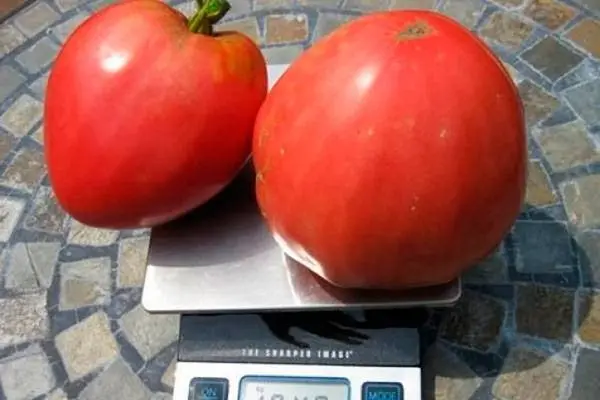
Productivity of the variety
The Sensei variety is characterized by long fruiting. Tomatoes are harvested before frost. In the future, green fruits are harvested, which ripen in room conditions.
These tomatoes are used in the daily diet for the preparation of first courses, purees and sauces. According to reviews, Sensei tomatoes are used to make thick and tasty juice.
Landing order
Sensei tomatoes are obtained by seedling method. First, seeds are planted at home. The grown plants are planted in open areas or in a greenhouse. Soil is prepared for planting, which is fertilized with compost or minerals.
Growing seedlings
Soil for seedlings of tomatoes Sensei is prepared in the fall. It is obtained by combining an equal amount of humus and soddy land. Soil permeability can be improved by adding peat or sand. In garden stores, you can buy ready-made soil mixtures for tomato seedlings.
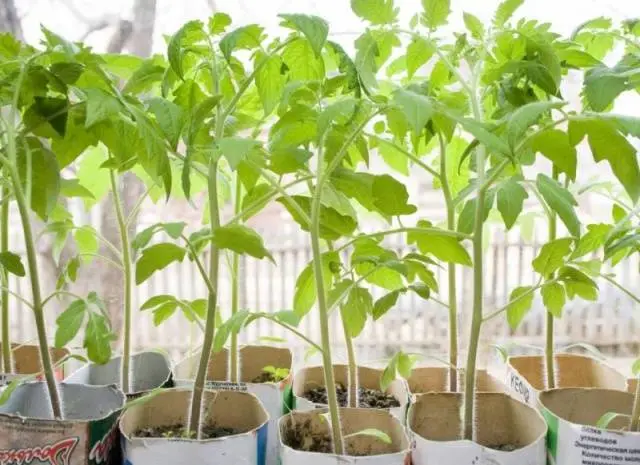
If garden soil is used, then it must be disinfected by placing it in a heated microwave or oven. Such processing is carried out no more than 10-15 minutes.
Then proceed to the preparation of seed material. To improve germination, the seeds are wrapped for a day in a damp cloth. Also, the material is treated with a solution of Fitosporin or salt. Purchased seeds do not require processing, as evidenced by their bright color.
Under seedlings of tomatoes, containers 10 cm high are prepared, which are filled with soil. For planting, depressions of 1 cm are made, where the seeds are placed every 2 cm. The seed material is sprinkled with earth on top, after which the plantings are watered.

Tomato seedlings appear most quickly at a temperature of 25-30 degrees. A few days later, when the first sprouts appear, the containers are transferred to the window. Within 12 hours, seedlings should be well lit. If necessary, additional lighting is installed.
When the soil dries up, it is necessary to water the tomatoes. It is best to use warm, settled water, which is applied with a spray bottle.
Planting in a greenhouse
Sensei tomatoes can be transferred to the greenhouse after they reach a height of 20 cm. 2 months after planting, the plants form a strong root system and 4-5 leaves.
The preparation of the greenhouse for tomatoes is carried out in the fall. About 10 cm of soil cover is recommended to be removed as it becomes a wintering ground for insect larvae and fungal spores. The remaining soil is dug up and humus is introduced into it.
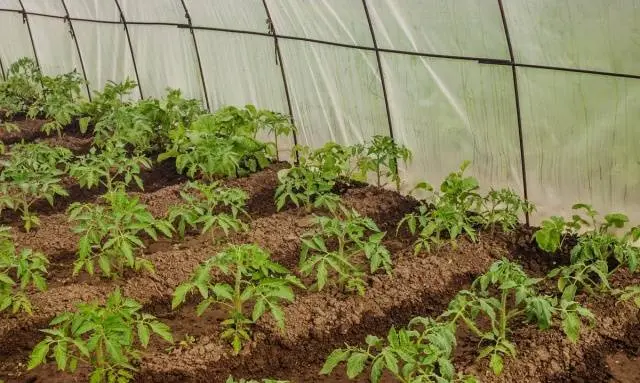
As a fertilizer per 1 sq. m is recommended to add 6 tbsp. l. superphosphate, 1 tbsp. l. potassium sulfide and 2 cups of wood ash.
Sensei tomatoes are grown in a greenhouse made of polycarbonate, glass or film. Its frame is made of aluminum, which is durable and lightweight material. The greenhouse is not installed in shady areas, because tomatoes need good lighting during the day.
Seedlings of the Sensei variety are placed in increments of 20 cm. A gap of 50 cm is made between the rows. Tomatoes are placed together with an earthen clod in prepared holes, after which they are covered with soil and moisture is introduced.
Outdoor cultivation
According to reviews, the Sensei tomato variety is successfully grown in open areas, if climatic conditions allow. To do this, use seedlings or plant seeds immediately on the beds.
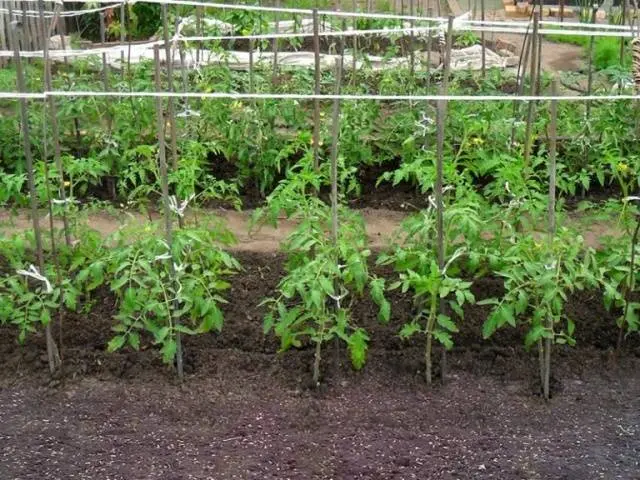
Work is carried out when the soil and air warm up well, and spring frosts pass. Some time after planting the tomatoes, they are covered with agrofibre for the night.
Beds for tomatoes are equipped in the autumn. The soil must be dug up, humus and wood ash added. For tomatoes, areas where cucumbers, cabbage, onions, beets, herbs, representatives of legumes and melons previously grew were suitable. Do not use beds after tomatoes, eggplants, potatoes and peppers.
In open ground, holes for tomatoes are placed at a distance of 40 cm. Intervals of 50 cm are made between the rows. After transferring the plants, their root system must be covered with earth, tamped down and watered well.
Care of tomatoes
Sensei care includes watering and fertilizing. The formation of a bush helps to control the growth of green mass. Tomatoes are not very susceptible to diseases in an optimal microclimate.
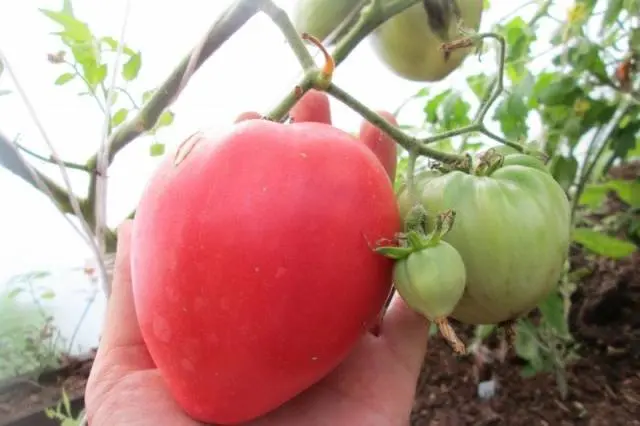
Watering plantings
Tomato Sensei needs moderate watering, which is done in the morning or evening hours. Previously, the water must settle and warm up in barrels. Do not water the tomatoes with a hose, because exposure to cold water is stressful for plants.
For each bush of tomatoes, it is necessary to make from 3 to 5 liters of water. The first watering is done a week after planting the tomatoes in a permanent place. Before flowering, they are watered every 3-4 days with 3 liters of water. When inflorescences and ovaries are formed, plants need 5 liters of water, but it is enough to carry out the procedure weekly. The amount of water during irrigation should be reduced during fruit formation.
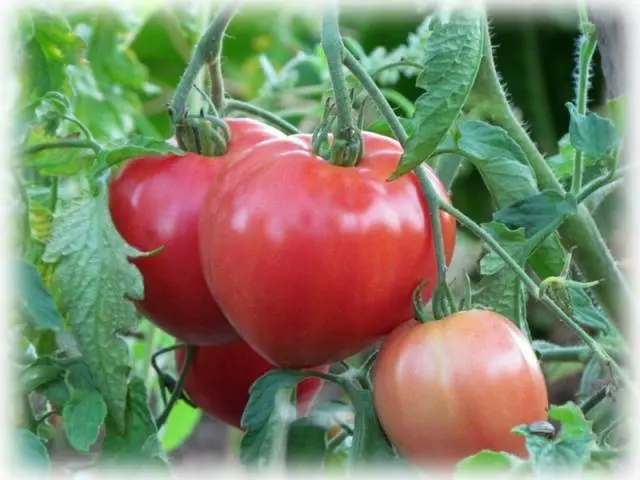
Application of fertilizers
According to reviews, Sensei tomatoes give a stable crop when using top dressing. During the season, fertilizers are applied several times as a root and foliar top dressing. During root treatment, a solution is prepared, which is watered with plantings. Foliar feeding involves spraying tomatoes.
The first top dressing is made after 10 days of planting tomatoes in a prepared place. Superphosphate and potassium sulfate (10 g each) are added to 35 liters of water, after which the plants are watered under the root. Phosphorus strengthens the root system of plants, and potassium improves the taste of fruits.
When flowering, tomatoes are treated with a solution of boric acid (10 g of fertilizer is required for a 10-liter bucket of water). By spraying, you can prevent the fall of the inflorescences and stimulate the formation of ovaries.
From folk remedies, tomatoes are fed with wood ash, which is applied directly to the soil or an infusion is obtained on its basis. Ash is rich in calcium, potassium, magnesium and other trace elements that are easily absorbed by tomatoes.

Tying up and pinching
According to its characteristics and description, the Sensei tomato variety is tall, therefore it requires tying. A support in the form of a metal or wooden plank is installed for each bush. Plants are tied at the top. When fruits appear, the branches must also be fixed at the support.
The Sensei variety is formed into one or two stems. Side shoots growing from the leaf axil must be removed manually. Due to pinching, it is possible to control the thickening of plantings and direct the forces of tomatoes to bear fruit.
Reviews of gardeners
Conclusion
Sensei tomatoes are valued for their good taste and high yield. The variety needs care, which involves watering, feeding and shaping a bush. Subject to agricultural technology, tomatoes are little susceptible to diseases.









